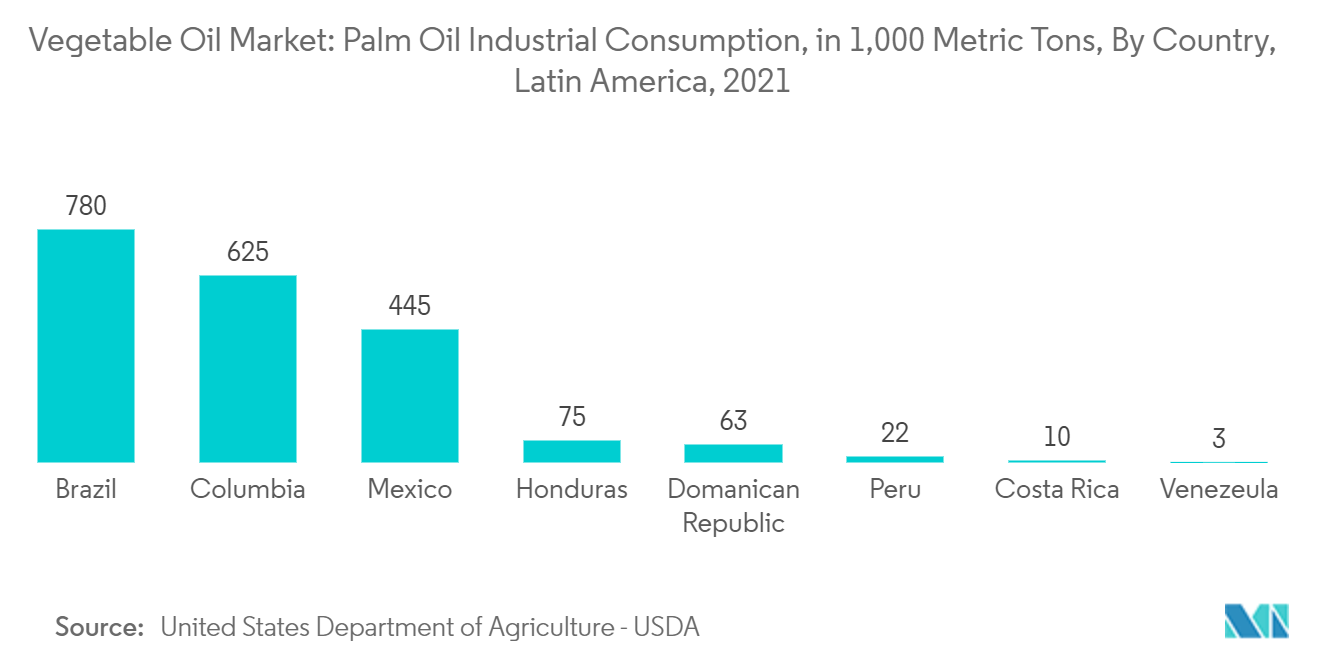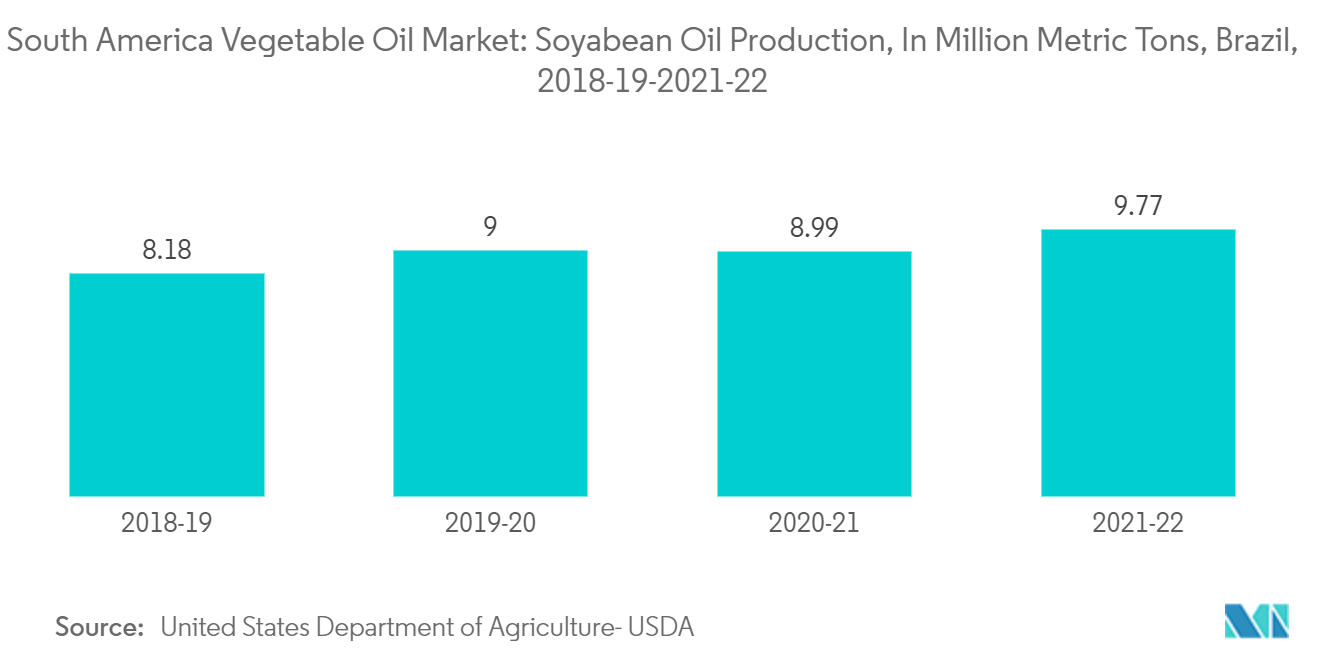Market Trends of South America Vegetable Oil Industry
Rising Demand for Biofuels to Support the Market Growth
- Growing concerns about the rate of climate change are fueling an increase in demand for biofuels, boosting market growth. Also, consumers' demand for biofuels is rising as fossil fuels negatively influence the environment; many people are searching for more environmentally friendly and sustainable alternatives. This has resulted in the increased production of biofuels in the region, which is expected to support and drive the market's growth during the forecast period. For example, according to BP, a prominent oil industry company, Brazil stands out as the leading biofuel producer in South America. In 2021, the country's biofuel production reached an impressive 376 thousand barrels of oil equivalent per day.
- In comparison, Colombia produced 13 thousand barrels per day of biofuel, while Argentina witnessed an increase in biofuel production from 27 thousand barrels of oil equivalent per day in 2020 to 38 thousand barrels per day in 2021. Thus, it is anticipated that the growing demand for biofuels will increase the need for canola, palm, and soybean oil to fuel market expansion.
- Moreover, the palm oil market is expected to grow faster as it is used to produce both methyl ester and hydro-deoxygenated biodiesel. Transesterification is the method used to produce methyl ester from palm oil. Palm oil biodiesel is frequently blended with other fuels to make palm oil biodiesel blends. For instance, according to the United States Department of Agriculture (USDA), in 2021, industrial consumption of palm oil in Brazil was estimated at 780 thousand metric tons, the highest figure reported among Latin American countries. That same year, Columbia's industrial palm oil consumption ranked second in the region at 625 thousand tons.
- Palm oil is used in both countries as a feedstock for biodiesel production. Additionally, countries like Colombia, Brazil, and Ecuador are increasingly embracing sustainable palm oil production as palm oil gains a stronger foothold in the rest of South America through certification from the Roundtable on Sustainable Palm Oil.
- Given the widespread use of palm oil in the region, numerous manufacturers are actively expanding their local operations and participating in the overseas palm oil trade, thereby contributing to the overall expansion of the market.

Brazil Accounts for the Largest Market Share
- Brazil is one of the prominent producers and exporters of vegetable oil after the United States. A few major factors, like the discovery of new offshore oil deposits, inducing multinational oil companies like the state-owned enterprise Petrobras and other companies focused on actively setting up new refineries, are driving the increased oil production and are expected to increase the vegetable oil production in the country.
- For instance, according to the United States Department of Agriculture (USDA), in 2022-22, the production of soybean oil in Brazil accounted for nearly 9.77 million metric tons, an increase in comparison to the previous year in which the production of soybean oil was 8.99 million metric tons. This would also be the highest figure reported in the study period. Additionally, soybean oil accounted for just over 72% of the volume of raw materials used for biodiesel production in Brazil in 2021.
- Moreover, Brazil has a large area of arable land and a favorable climate for growing vegetable oil-producing crops like soybeans, palm, and others which gives it an advantage as it has an increased vegetable oil crop production area. For instance, according to USDA Foreign Agricultural Service, in the marketing year ending September 2021, the area planted with oil palm in Brazil was estimated to reach 180,000 hectares which increased from 175,000 hectares when compared with 2019.
- Furthermore, a few government initiatives and regulation has been further supporting the market's growth making Brazil the largest country in the region to hold the market share. For instance, Brazil boasts one of the world's largest biodiesel programs, which includes a mandate stipulating a minimum blend of biodiesel in diesel fuel.
- As per Brazil's National Agency of Petroleum, Natural Gas, and Biofuels (ANP), the current mandate sets the blend rate at 10% (B10) as of 2022. This commitment to biodiesel usage showcases Brazil's dedication to promoting renewable and sustainable energy sources in the transportation sector. This has created an additional market for vegetable oils in the country as the requirement for biofuels made of vegetable oils has increased.

